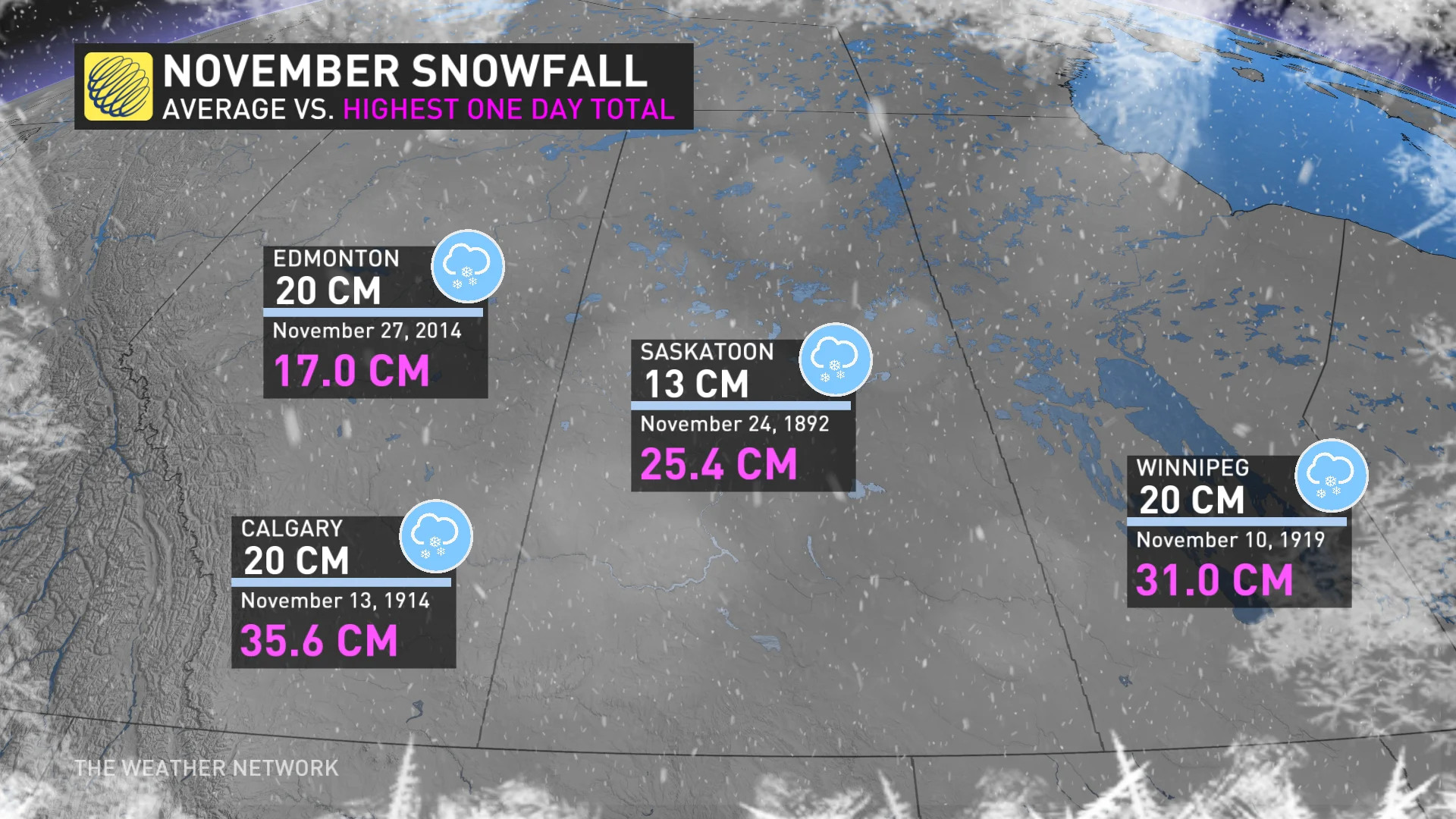Snowy surprises can blanket Canada during a typical November
DON'T MISS: Canada's 2024-25 ski season is almost here! When do resorts open?
The most reliable snows fall across B.C.’s mountains, the Rockies, interior sections of Quebec, and across Northern Canada. Folks in places like Yellowknife typically see several dozen centimetres of snow during a typical November.

Bursts of snow will more frequently creep onto the Prairies, where Calgary, Edmonton, and Winnipeg all average about 20 cm of accumulation each November. Bigger storms can happen, though. Calgary and Saskatoon have racked up 20+ cm of snow in a single day in past Novembers.
MUST SEE: What does a classic fall storm look like in your part of Canada?
Things are a little trickier across Ontario where we have to contend with the Great Lakes. Cold air blowing over the warm waters is a recipe for lake-effect snow. These bands of heavy snow can produce blizzard-like conditions.

But conditions can vary greatly across southern Ontario, and even throughout the Greater Toronto Area, as bands whip off the lakes with snowfall rates so intense that thunder and lightning are sometimes possible.
Toronto averages about 9 cm of snow every November. We’ve seen much more than that in some seasons. November 1940 brought the city a whopping total of 61 cm of snow.
Communities in the snow belts—downwind from Lake Huron, Georgian Bay, Lake Erie, and Lake Ontario—can see much more snow as the lake-effect season kicks up in November. Some of the storms can be a doozy. One particularly wicked lake-effect snow event back in the middle of November 2014 produced 165 cm of snow near Buffalo, New York.

























































